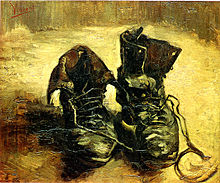
2016 Summer Immersion Course Outline
Combinatorial Problems of Topology and Knot Theory: A Clinical Introduction
It will be presented by R. Groome and others. The aim is to present a second pass through topology and knot theory in light of the work of J. Lacan. This is neither a cartel nor a seminar, but a course in the sense the aim is to focus both on the instruction of a mathematical method and a de-technicalization – or de-codification – of its theory and practice. Thus, the course does not presuppose any previous technical or mathematical background but only a certain perseverance on the part of the participant at the level of reading and writing.
Beginning: 11:00-2:00pm Saturday, July 9th. Every Saturday afterward for 4 weeks (5 weeks total)
Access: Open to Public
Economy: $400.
The size of the Immersion is limited to 8 participants. Web assisted participation is possible via Skype.
On one hand, my task is to simplify a topological presentation to the widest possible audience without vulgarizing. On the other, my aim is to introduce topology in a way that is clinical: by 'clinical' I mean any investigation which takes the relation to the materiality of its language seriously; as crucial to the problem of reading and writing the structure of space and not as a mere means of coding and decoding. Although, these clinical questions first arose in the study of speech and vision disorders, from Head and Freud to Jakobson, it soon became evident that their significance went beyond any one specialized science of pathology. I want to show how, at least since Lacan, it has not only become impossible for topology to disregard the observations made in this clinical field, but impossible for the analysts to bypass the topological questions that are raised therein. Far from being a mere 'application' of topology to psychoanalysis or a psychoanalysis of topology, it is a methodological question in the sense of Heraclitus: the way up is the way down.
Four texts and a handout will be used as support for the course:
1) Introduction to Combinatorial Topology, Fréchet and Ky Fan – English Translation.
2) On Knots, P.G. Tait (available Online)
3) What is a Thing?, Martin Heidegger
4) Handout: (To be announced)
Outline
1)Two dimensions of the Combinatory: Vertical-Combination vs. Horizontal-Permutation/ Tables
1.1. Problems of Combination: Unordered subsets
1.11 Repetitive and Un-repetitive
1.12. The Problem of Encounters
1.2. Problems of Permutation: Ordered sets/ Arrangements
1.21 Repetitive and Un-repetitive
1.22 Problem of Rooks: Discordant Permutations and Derangements
1.3 Historical: Table vs. Tableau – Combinatory calculus vs. Characteristic Universalis
2) Problems of Combinatorial Graph Theory
2.1 Euler Paths and Cycles
2.12 Euler's Formula
2.2 Hamilton Paths and Cycles
2.3 Duality: Lines Graph
3) Problems of Combinatorial Surface and Knot Theory
3.1. The four main surfaces: Classification Theorem for 2-d
3.12 Return to Geometry: Pythagorean Theorem as Combinatorial Problem
3.13 Four Geometries of Klein: Symmetry, Invariance, Group
3.14 Finite Projective Geometry: Fano Plane and the Borromean Lock
3.2 The Knot Problem: Classification Theorem for 3-d
3.22 Global vs Local: Lautman's Problem
3.23 Intrinsic vs. Extrinsic: Antoine's Theorem
3.24 Links, Knots, and Locks: Tait's Classification
3.25 The Stoicea of Knot-Link-Lock Theory
On the confirmation of your participation in the Summer Immersion to the Secretary, you will be sent an Introduction Handout.
Questions should be addressed to the Secretary at: PLACE@topoi.net